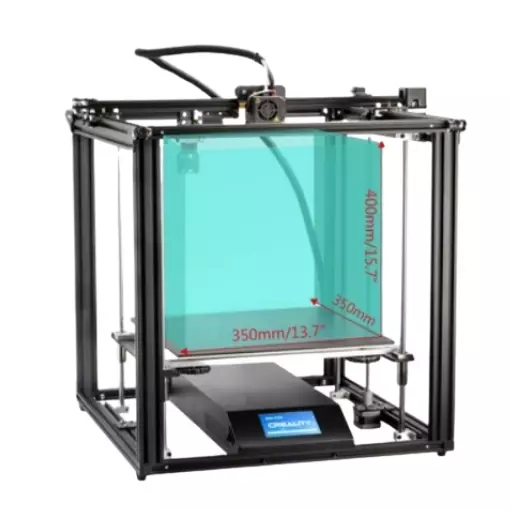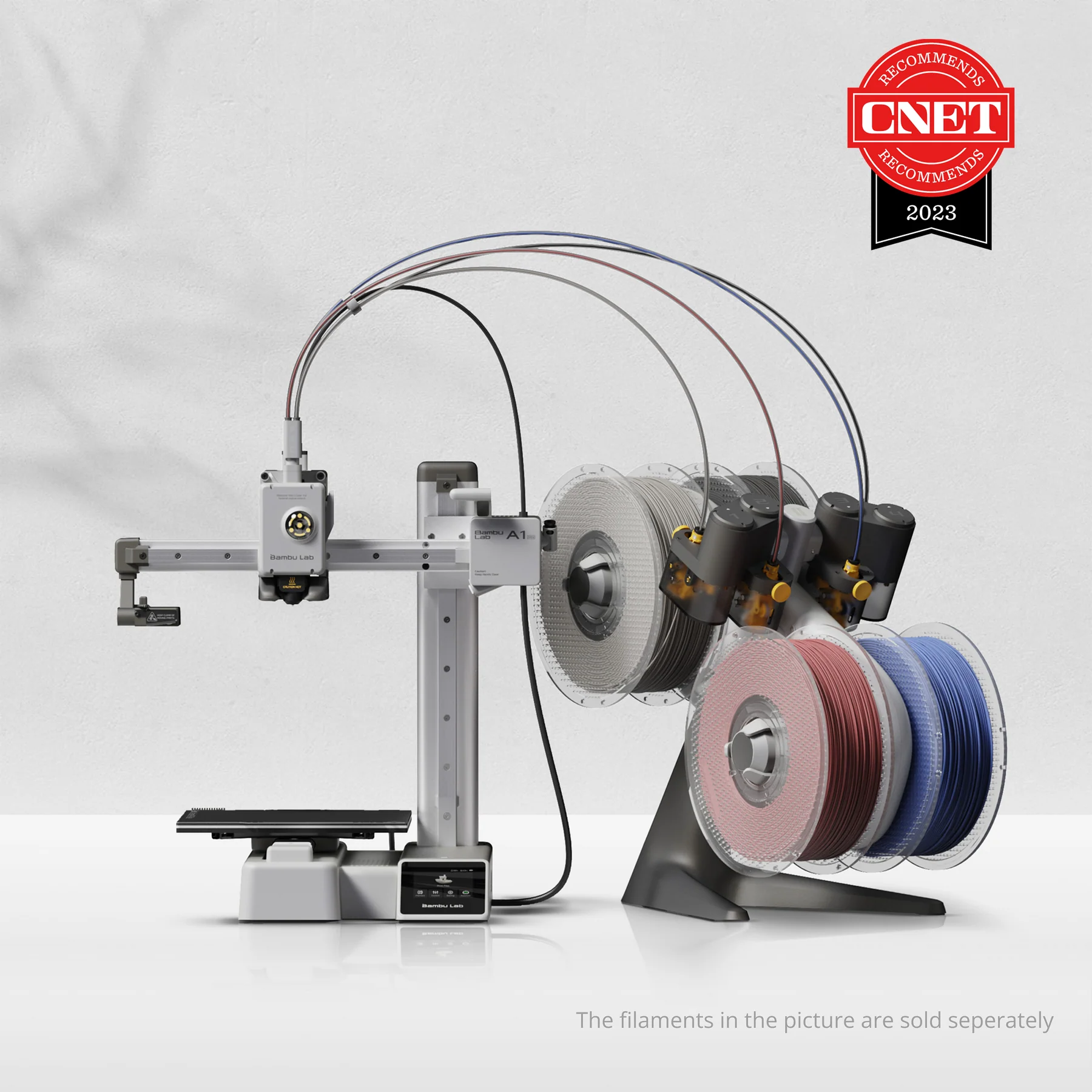Compare Ender 5 Plus vs A1 Mini
Comparison between the best 3D printers
Choose the best 3D printer at the best price. The cheapest 3D printers are here.
Buy a 3D printer here with 3D Fila.
 |
 |
|
| Model | Ender 5 Plus[BUY Ender 5 Plus] |
A1 Mini |
| Printing Material | Filament | Filament |
| Buy Filament for Creality 3D Ender 5 Plus | Buy Filament forBambu Lab A1 Mini | |
| Estimated price | $599,00 | $549,00 |
| Manufacturer | Creality 3D | Bambu Lab |
| Release Year | 2019 | 2023 |
| Print Volume [mm] | 350x350x400 | 180x180x180 |
| Printer Size [mm] | 632x619x666 | 315x347x365 |
| Weight [kg] | 18,2 | 5,5 |
| Power Loss Recovery | YES | YES |
| Enclosed printer | NO | NO |
| Bed Leveling | Automatic | Automatic |
| Filament End Sensor | YES | YES |
| Bed type | Heated | Heated |
| Power supply system | Bowden | Direct Drive |
| Standard nozzle | 0,4 | 0,4 |
| Maximum Nozzle Temperature [°C] | 260 | 300 |
| Maximum Bed Temperature [°C] | 100 | 80 |
| Maximum printing speed [mm/s] | 180 | 500 |
| Filament holder | YES | YES |
| Camera for supervision | NO | NO |
| Recommended filaments | PLA, TPU, ABS, PETG | PLA, PETG, TPU, PVA |
| Recommended slicers | Cura, Simplify, Slic3r | Bambu Studio, Super Slicer, Cura, Prusa Slicer, Orca |
| Maximum Resolution [mm] | 0,1 | 0,1 |
| Processor | 32 bits | 32-bit Silenciosa |
| Display | Touchscreen TFT 4,3'' | Touchscreen 2,4'' |
| Power Supply | 24V / 504W | 150 W |
| Connectivity | SD / USB | Wifi, Bambu bus, Cartão SD |
| Operating systems | Windows, Mac, Linux | Windows, Linux, Macbook |
| Date of registration in the system | 2021-04-14 | 2024-04-10 |
| Release date | 2019 | 2023 |
| Extra features | The Ender 5 Plus offers a large print volume (350x350x400 mm) and fast assembly. It includes a BLTouch sensor, but with range limitations. It stands out for its dimensional accuracy, although it requires adjustments to the slicer settings. Despite the noise, its integrated design saves space, and includes features such as a filament sensor and power resumption. Ideal for large projects, it requires refinement in the settings for high-quality prints. | The Bambu Lab A1 Mini stands out not only for its impressive speed and automatic calibration, but also for its multi-color printing capability thanks to AMS Lite. This innovative system makes multi-color printing easy, making it accessible to everyone. AMS Lite, specific to the A1 Mini, supports up to four different materials simultaneously, providing creative freedom without complications. With comprehensive sensors for energy monitoring and recovery, a camera for timelapses and Wi-Fi control, the A1 Mini and AMS Lite together offer an intuitive and advanced 3D printing experience, ideal for materials such as PLA, PETG and TPU, and designed for simplicity and fast maintenance with quick-change nozzles. |
| Support for multiple colors and materials (AMS and CFS) | NO | YES |
Notes * |
||
| Cost-benefit | 6 / 10 | 7 / 10 |
| Hardware | 2 / 10 | 4.2 / 10 |
| Tela | . | . |
| Print volume | 4 / 10 | 3 / 10 |
| Performance | 1 / 10 | 4 / 10 |
| [BUY Ender 5 Plus] |
Conclusion |
| In conclusion, when comparing the Ender 5 Plus and the Bambu Lab A1 Mini, both printers have strengths that cater to different user needs and preferences. The Ender 5 Plus offers a larger print volume, making it suitable for big projects and more complex prints. Its rugged build and capabilities for various filaments like PLA, ABS, and TPU position it well for users seeking versatility in material use. However, it does require some tinkering and adjustments for optimal performance, which may not appeal to beginners. The overall cost-to-benefit ratio is decent, but the hardware features are somewhat limited in comparison. On the other hand, the Bambu Lab A1 Mini, with its impressive printing speed and innovative multi-color printing capabilities through the AMS Lite system, is geared towards users who value creativity and ease of use. It simplifies the printing process, allowing for intuitive control and maintenance, which is ideal for novice users or those looking for a more automated experience. Although its print volume is smaller, it compensates with higher performance ratings and support for a variety of materials. Ultimately, if you prioritize print volume and are comfortable making adjustments, the Ender 5 Plus is a solid choice. However, if speed, ease of use, and creative options are your primary goals, the A1 Mini may be the better option, making it an appealing choice for many users at a slightly lower price point. |

